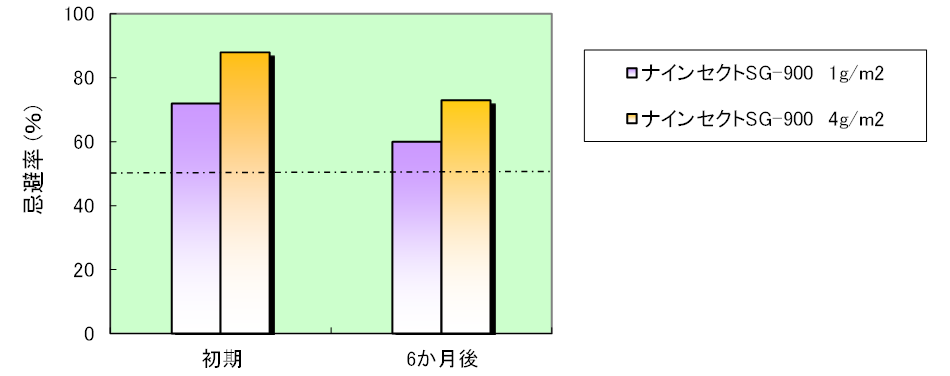Inorganic/organic hybrid insecticide Ninesect
Ninesect is an inorganic/organic hybrid insecticide that combines inorganic compounds and insecticidal ingredients using our technology. The hybridization of the inorganic/organic compound with an insecticidal component has enabled the development of features such as heat resistance, water resistance, and slow release, which are difficult to obtain with organic insecticides, and has made it possible to be used in various applications that require durability.
* This product is not intended to act directly on humans or insects.
Please use this product only after thoroughly checking the relevant laws and regulations such as the Pharmaceutical Affairs Law.
- Product Name
-
Ninesect
Features
- Mite repellent effect on textile products and interior materials
- High heat resistance and can be processed by resin kneading
- Long-lasting mite repellent effect due to its slow-release property
- High safety makes it applicable to a variety of applications
Usage
| Interior | Curtains, carpets, floor mats, tatami mat, furniture, wallpaper, flooring materials, screen door, etc. |
|---|---|
| Clothing and bedding | Hats, sheets, pillows, bedding, closets, sundries, etc. |
Specifications
Grades and Features
| Grades | Appearance | Average particle diameter (μm) | bulk density | water dispersion pH |
|---|---|---|---|---|
| SG-900 | White powder | 2.5μm | 0.3 | 7 |
Mechanism of action
Insect repellent agents gradually released from Ninesect develop a repellent effect against mites.
Safety
Ninesect SG-900 is composed of highly safe agents.
Safety test results
| Safety items | Test conditions | Result |
|---|---|---|
| Acute oral toxicity | Estimated value | Unclassified |
| Primary skin irritation | Estimated value | Unclassified |
Examples of application
Cotton cloth
Ninesect SG-900 is highly effective in repelling mites when it is spread on the surface of cloth and other materials. In addition, the mite repellent effect lasts for a long period of time.
Tick repellent test JIS L 1920

Resin
Ninesect SG-900 is highly effective in repelling mites in various resin molded products by kneading an appropriate amount into the product and processing it.
Tick repellent test JIS L 1920
Example of processing to polypropylene resin
(Processing volume: 2wt%)

*Kneading temperature : 220°C
*Heat resistance test : 81℃(dry)×48hours
*Flooding test : 50°C warm water x 16 hours
Examples of processing on various resins
(Amount processed: 5wt%)

*Kneading temperature
Nyr : 270℃, PET : 280
Inquiries
- Department in charge
- Inorganic Functional Materials Department
- Phone number
- +81-3-3597-7265
*9:00 am - 5:00 pm (except weekends and holidays)



